Adam Krause

Recent evidence suggests that sleep and sleep loss have profound effects on emotional brain reactivity, especially for positive emotional experiences. As a consequence, sleep disruption may lead to detrimental risk taking and reward seeking. However, it remains unclear exactly what type of sleep helps reset the brains ability to appropriately react to rewarding experiences. I propose to test the hypothesis that a specific type of sleeprapid-eye movement (REM) sleep, and its associated electrical brain activityrestores the optimal next-day reactivity to rewarding, motivating experiences. I will therefore investigate whether the quantity […]
Jared Rosen
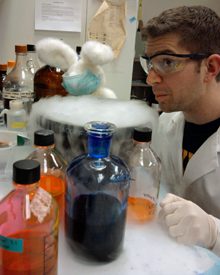
The H, K ATPase is a P-type ATPase proton pump that is highly expressed in the gastric parietal cell. This enzymatic proton pump is responsible for creating the highly acidic environment in the lumen of the stomach. The protein is comprised of a larger catalytic “alpha” subunit that creates the high proton gradient and a smaller “beta” subunit. The goal of my research project is to gain a deeper insight into how it is that the H,K ATPase protects itself from digestion by the very acid that it produces to […]
Alina Boltunova
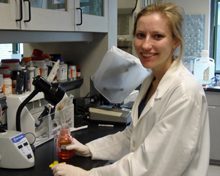
Emmetropization is a normal developmental process in which the eyes growth is regulated to achieve a match between eye length and its refractive power. It results in the reduction of refractive errors present at birth and has been observed in all animal species, including humans, studied thus far. The guinea pig is increasingly used to model myopia (near-sightedness), but there appear to be differences between guinea pig strains in their susceptibility to myopia-inducing stimuli. To understand the origin of these differences, I plan to compare the emmetropization of different strains […]
Michelle Leu
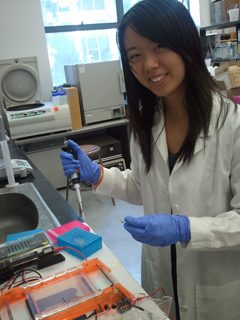
In my research, I plan to investigate the role of vitamin A in obesity prevention. With obesity increasing at alarming rates in the United States in the past twenty years, it is imperative to gain a deeper understanding in the development of the condition. Obesity is influenced by many risk factors such as diet, lifestyle, and genetics. I will explore how vitamin A regulates adipose tissue, observing mice with the Rdh10 gene conditionally deleted in white adipose tissue, and comparing their weight gain to that of wild type control mice. […]
Timothy Roth
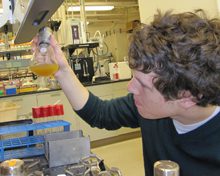
The current energy crisis in the US has demanded the production of alternative, renewable fuels to replace our current petroleum-based fuels. However, the limitations of the current biofuel standard, ethanol, require the development of second-generation fuels that can be used with existing engines and infrastructure. One such fuel is n-butanol, which the M. Chang group has successfully produced at good yield using a synthetic metabolic pathway engineered into E. coli. The Dueber Lab has demonstrated that synthetic protein scaffolds can be used to colocalize enzymes in metabolic pathways in varying […]
John Campo
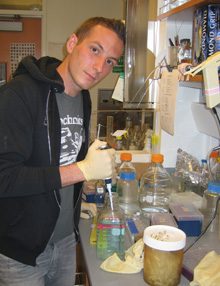
The ultimate goal of my research is to identify the structure of the subunit of DNA polymerase III in Aquifex aeolicus (Aquifex) using X-ray crystallography. DNA pol III is the enzyme that is responsible for the majority of the DNA replication that occurs in this strain of bacteria. The the subunit of DNA pol III is responsible for the polymerase activity. To date, the structure of the replicative unit has only been determined in two gram-negative bacteria, Escherichia coli (E. coli) and Thermus aquaticus (Taq) (Lamers et al., 2006, and […]
Marisa Lim
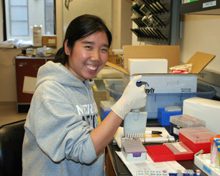
Comparison of DNA sequences between different populations often reveals genetic lineages that warrant further study to assess the validity of current species delineations. Recent genetic work on the California ground squirrel uncovered three morphologically cryptic lineages. The Northern and Central lineages come into contact near Lake Almanor. The Central and Southern lineages meet near Mono Lake. Preliminary work found genetic differences distinguishing the Northern and Central lineages, despite the apparent absence of a geographic barrier to gene flow. In contrast, the Central and Southern lineages are genetically mixed (based on […]
Jae Young Ryoo
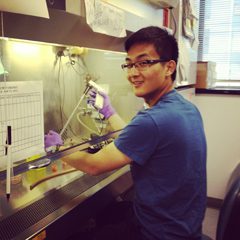
Clathrin-mediated endocytosis is a process by which a cell absorbs molecules with the help of the protein clathrin. Cell biology studies often employ a variety of different cell types to study a single cellular pathway but how these pathways operate often differ depending on the cell type observed. Unfortunately, in most cases, little is known about the mechanisms that give rise to these differences. I aim to explore how cells differ in the process of clathrin-mediated endocytosis, with the ultimate goal of understanding why these differences exist and what it […]
Alexandra Carstensen

How does the brain represent concepts outside of perceptual experience? Relatively little is known about the neural mechanisms and brain areas involved in abstract thoughtthose enabling us to conceptualize domains for which we lack dedicated perceptual systems. Theories of embodied cognition suggest that understandings of such abstract domains are constructed from co-experienced perceptual input; for instance, Lakoff & Johnson (1999) have proposed that we build representations of time based on experiences of movement through space, as we consistently experience the passage of time while moving. This research seeks to determine […]
Elaine Liu
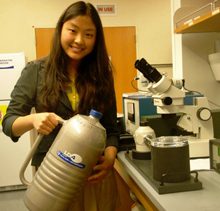
My project seeks to solve the structure of the binding interaction between Mb11 and -tubulin in microtubules. Microtubules are dynamic cytoskeletal polymers essential to life, composed of tubulin subunits, heterodimers of – and -tubulin, which align longitudinally into linear protofilaments and assemble laterally into a cylinder, forming the microtubule. Mb11 is an antibody that has been found to bind specifically to tubulin in the GTP bound conformation. In contrast to GDP bound tubulin, GTP-bound tubulin is straighter and more stable. This difference allows for the specific recognition of the antibody […]